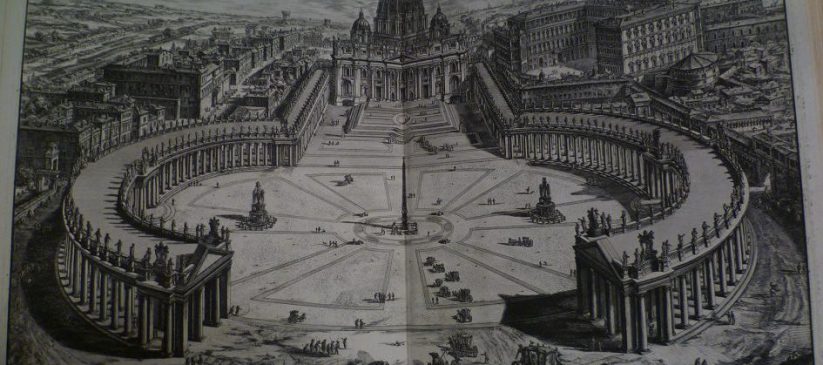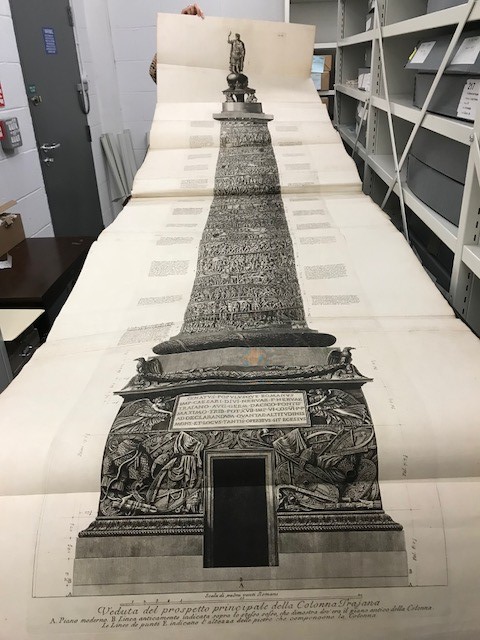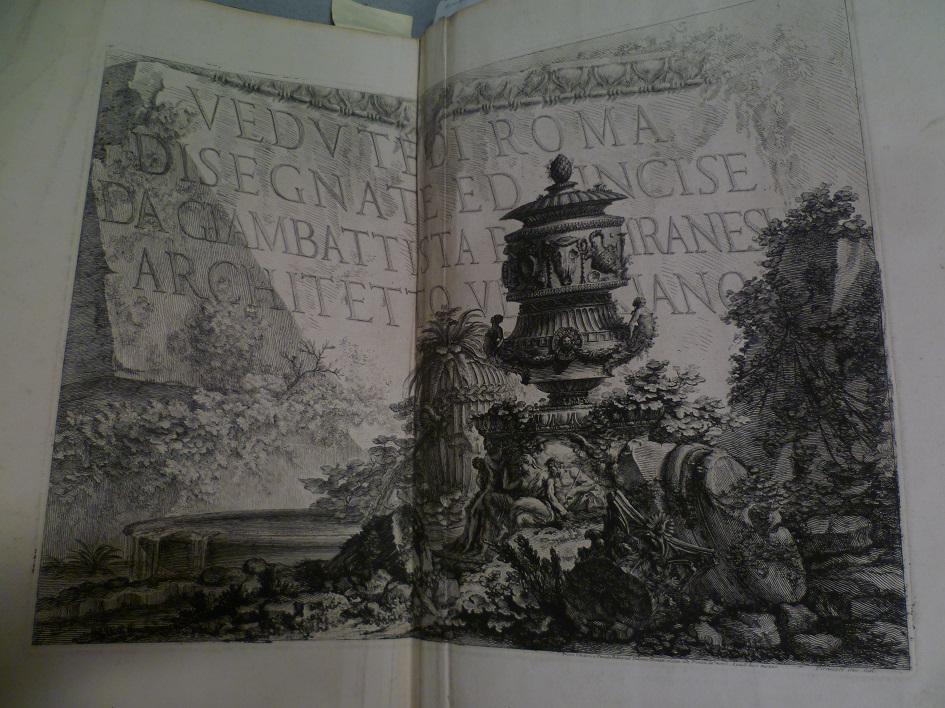Giovanni Battista Piranesi and the glory of Rome

by Fiona Melhuish, UMASCS Librarian
Hidden away in our collections store, amongst the rows of archive boxes, are the oversize book shelves, and the Overstone Folio Large sequence of the Overstone Library. Amongst the many treasures of this collection are a number of volumes of engravings by Giovanni Battista Piranesi (1720-78), one of the greatest engravers of the eighteenth century, and today, 4 October 2020, is the 300th anniversary of his birth in Venice.

Piranesi initially trained as an architect, and later studied etching with Carlo Zucchi in Venice. In 1740, he moved to Rome, and trained for a short time as a stage designer with the Italian architect, Filippo Juvarra. Piranesi produced a great number of engravings during his lifetime, and it is as an engraver that he is best known today, rather than as an architect. However, his work and ideas were to be of great influence to architects of the neo-classical movement throughout Europe in the eighteenth century and beyond. He became revered particularly for his intense, evocative and romantic views of the buildings and monuments of ancient and modern Rome, with their dramatic contrasts of light and dark tones. These prints, exceptional for their large size, were sold as single sheets and in series which could then be bound into volumes by the purchaser according to their taste and wealth.

In 1745, Piranesi began an extraordinary series of prints which were later published as Invenzioni capric. di carceri (Inventions of Fanciful Prisons). These works, which show the influence of Juvarra, and also the Italian painter and printmaker, Giovanni Battista Tiepolo, depict dark and nightmarish scenes of imaginary underground prisons, filled with strange and menacing machines. These works were to attract the interest of the Surrealist artists in the twentieth century, among many others.
Piranesi began his monumental work, Vedute di Roma (Views of Rome) in around 1748, producing 137 plates of views of contemporary Rome, a project that he was to work on for the rest of his life.
Piranesi produced both real and imaginary compositions of ancient monuments and ruins. He believed that the glory of ancient Rome had been degraded and corrupted by the modern world, and hoped through his art and architectural work to recreate, celebrate and in some cases, re-imagine, the architecture and antiquities of ancient and modern Rome and the magnificence of the Eternal City as the centre of civilisation. Piranesi had a strong sense of his intensely creative and idealist approach, and wrote that “I need to produce great ideas and I believe that were I given the planning of a new universe, I would be mad enough to undertake it”.

We are very fortunate to hold the imperial folio, two-volume set of Vedute di Roma (1748?-1778?), and Vedute di Pesto (1770) in the Overstone Library, together with the extraordinary Colonna di Trajano e di Antonio Pio (1770), containing a huge fold-out plate of Piranesi’s engraving of Trajan’s Column (see image above).
We also hold a copy of Piranesi’s Diverse maniere d’adornare i cammini ed ogni altra parte degli edifizi (Diverse manners of ornamenting chimneys …) (1769), which features unusual and imaginative designs for chimney pieces and wall decorations, in the Reserve Collection. A set of postcards featuring Piranesi’s engravings of prisons are held in the John & Griselda Lewis Collection (JGL 46/8).
All of these items are available to view by appointment through our Special Collections Service reading room.
References
Ficacci, Luigi. Giovanni Battista Piranesi: selected etchings. Köln : Taschen GmbH, 2001.
Lommen, Mathieu (ed.). The book of books : 500 years of graphic innovation. London : Thames & Hudson, 2012. Available to loan at the University Library at LARGE–F 655.5309-BOO (3rd floor) and for reference use only at the Special Collections Service at REFERENCE–002.09-BOO
Watkin, David. A history of Western architecture. London: Laurence King Publishing, 1992. Sixth edition (2015) available to loan at the University Library at 720.94-WAT (3rd floor).
